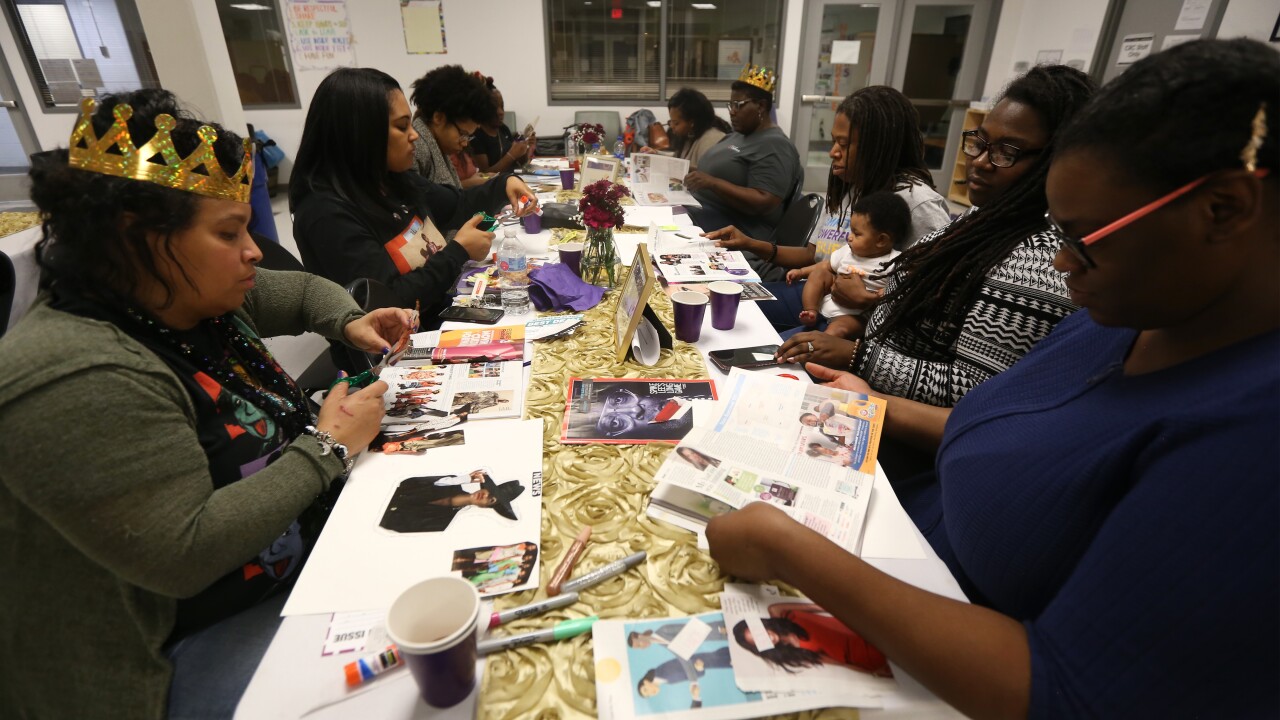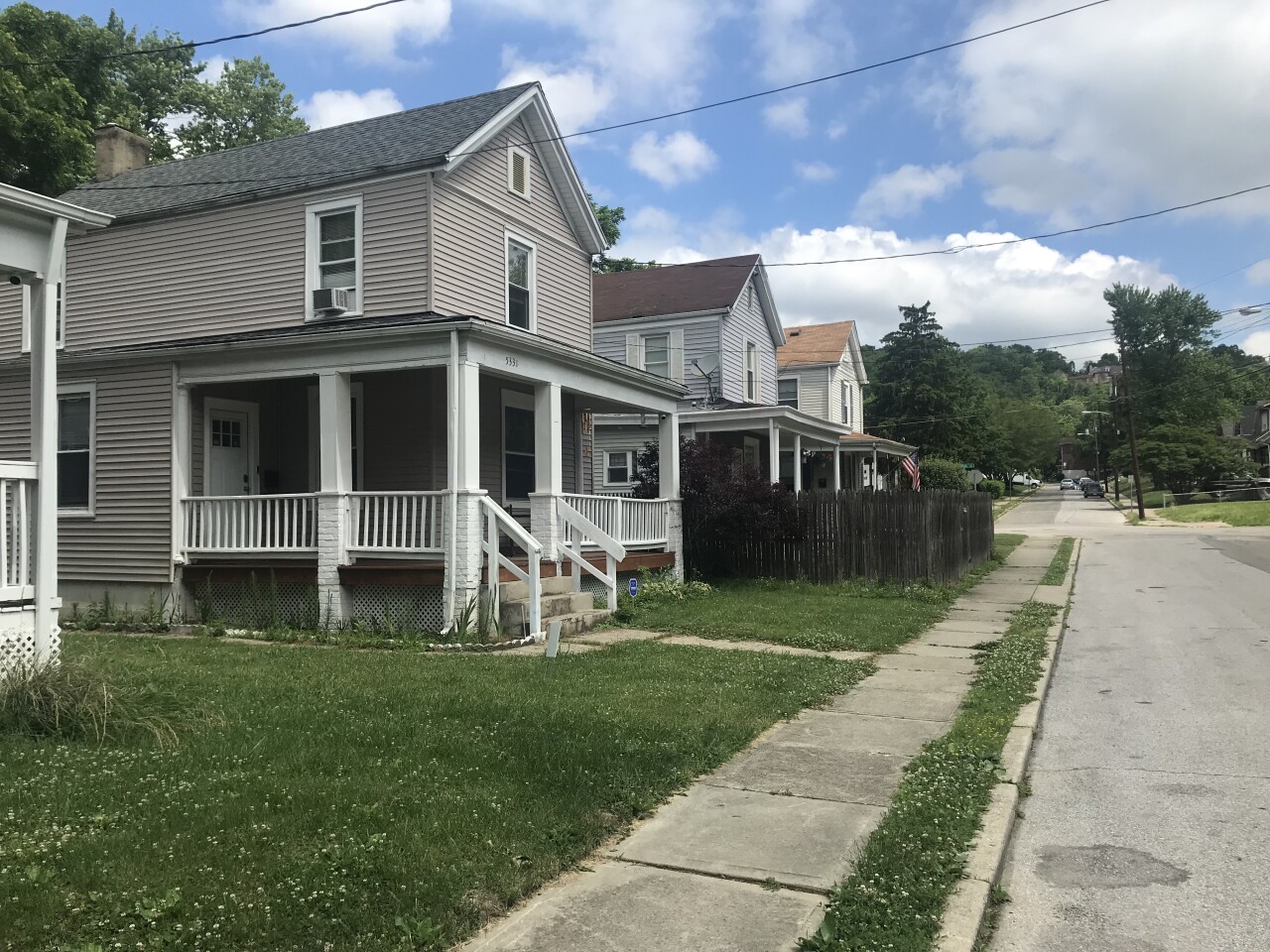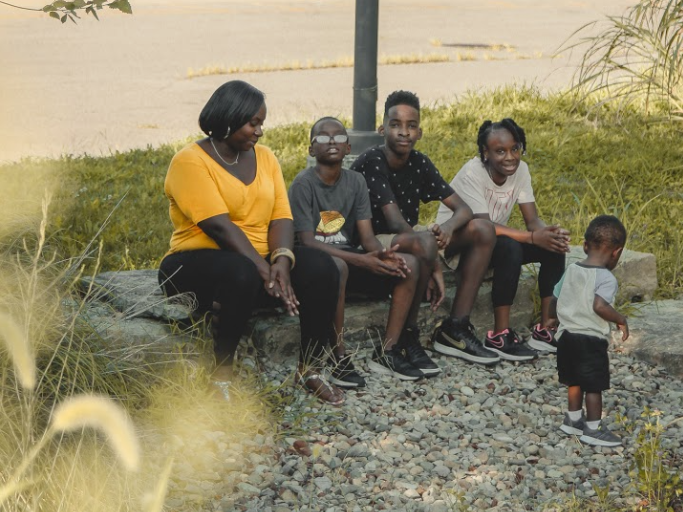Twenty years ago, in the early morning hours of April 7, 2001, Cincinnati Police Officer Stephen Roach shot and killed 19-year-old Timothy Thomas in an Over-the-Rhine alley. Thomas was the 15th Black man killed by police since 1995, and his death sparked days of unrest that highlighted a deep divide between Cincinnati’s Black community and the police. That mistrust, along with lawsuits accusing the department of a decades-long history of racial profiling, helped shape the Collaborative Agreement. We hope our coverage online, on air and on all streaming platforms will start a conversation about what led to the unrest, what has happened since and what work remains to be done.
CINCINNATI -- LaVenia Jones was years away from the lessons of adulthood when a Cincinnati police officer fatally shot Timothy Thomas.
Just 12 and a half, Jones was a sixth grader at the old Hoffman Elementary School. She learned quickly, though, listening as her mother explained what happened -- and why it never should have.
“The conversation that was had in our household was that he didn’t deserve to be shot at,” said Jones, now 32 and a mother of four. “From there, the conversation opened up to a whole lot of different things, like the disparities within a neighborhood, how there wasn’t any enrichment programming within my school.”
The death of another Black man at the hands of Cincinnati police sparked civil unrest that lasted for days. Former Mayor Charlie Luken instituted a curfew. But Jones still had to go to school, and her mom still had to leave their home in East Walnut Hills to work as a taxi dispatcher.

Jones remembers her mom carried proof of her job to show police officers if they questioned her. She remembers police made a big show of arresting some of her classmates who stole from stores at Peebles Corner in Walnut Hills during looting there. And she remembers her mom’s anger after learning that people in predominantly white Mount Adams were breaking curfew to go to bars and restaurants without any repercussions while people in predominantly Black neighborhoods like hers were hassled or punished for being out after hours.
“It made me realize that things aren’t equal,” Jones said. “There wasn’t any equity then, and we certainly have a problem with equity now.”
In the aftermath of Cincinnati’s civil unrest 20 years ago, business leaders, pastors and politicians discussed the anger and frustration of many Black Cincinnati residents because of the disparities they faced in employment, education and opportunity.
WCPO 9 examined what progress has occurred since 2001 regarding infant mortality, affordable housing and poverty.
It feels to Jones like little has changed. The data shows how right she is.
Infant mortality declining
In 2001, Hamilton County had 124 babies die before their first birthdays and an infant mortality rate of about 11 deaths per every 1,000 live births.
Infant mortality got worse in the county in subsequent years, with 2005 marking the modern low point, said Ryan Adcock, executive director of Cradle Cincinnati, the initiative founded in 2012 to reduce infant mortality in Hamilton County. In 2005, the county had 159 infant deaths and an infant mortality rate of 13.9 deaths for every 1,000 live births.
Black families historically have been far more likely to experience infant deaths than white families in Hamilton County, and three years ago Cradle Cincinnati named racism as the cause for that disparity.
Since then, the organization has focused on reducing Black infant deaths as part of its overall mission to reduce infant mortality.
“What I really long to see in this community,” Adcock said, “is a day when you are no more likely to lose your child if you are Black than if you are white.”

Hamilton County is inching closer to that goal.
In 2019 – the most recent data available – a total of 96 babies died before their first birthdays. The infant mortality rate was 9.1 deaths per 1,000 live births. And the county had fewer Black babies die than ever before.
“There is a lot of work left to do, and there continue to be large racial disparities in outcomes,” Adcock said. “But that disparity is starting to shrink. And we are seeing all of the numbers move in the right direction.”
Meredith Shockley-Smith, Cradle Cincinnati’s director of equity and community strategies, credits that progress to the work of Black moms. Cradle Cincinnati’s Queens Village social network seeks to empower Black moms to advocate for their health care needs and the health of their children.
“When you put Black women in charge, and when we think about infant mortality and you ask them what they need, and then you let them do that or support them in doing that, you see better outcomes,” said Shockley-Smith. “What we saw in 2019 – the best infant mortality rate we’ve seen in Hamilton County – it was a beautiful celebration.”
Having success to celebrate is important, she said, because the deaths of Black men -- Thomas and George Floyd and so many others -- weigh heavily on Black women.
“When a Black man is shot, all mothers are crying at home,” she said. “Mothers are talking about, like, how do we think about the babies we’re bringing into the world and support them differently.”
Jones supports Cradle Cincinnati’s work and serves on its community advisory board.

However, she said she encountered racism and bias when she worked for a local hospital as a community health worker, a job designed to help reduce infant deaths.
“The idea of it is very beautiful, you know. Somebody from the community goes out to a pregnant woman’s home, and you educate them, and you connect them to resources,” Jones said. “Great.”
But Jones felt like she had all the responsibility for the health of moms and their babies, with none of the power to make change.
“Community health workers are predominantly Black women, and we’re serving Black women. But it’s like a Catch-22,” she said. “I’m at the bottom when it comes to that institution working in that health care field, so everything that is not fulfilled when we sit down and talk about this individual and the goals that need to happen, it falls on me.”
For example, Jones said when she passed along a mom’s complaint about her treatment at a clinic, she was told that she was being too critical.
Jones quit the job and now works in banking.
“I will never go back,” she said. “That was so stressful.”
Poverty problems persist
Cincinnati and Hamilton County have shown progress in poverty and child poverty rates since 2015, but the results are less encouraging when compared with where the community stood 20 years ago.
The 2000 census found that 22% of Cincinnati’s total population lived below the federal poverty line in 1999. The city’s poverty rate was worse for children, with 33% of all children in Cincinnati living in poverty.
Back then, Hamilton County had an overall poverty rate of 12%, according to census data, with 17% of all Hamilton County children living below the federal poverty line.
By 2019, the number of people living in Cincinnati and Hamilton County shrank, but the total number of people living in poverty grew, according to the U.S. Census Bureau’s American Community Survey estimates released in December.

The overall poverty rate for Cincinnati was 26.3% in 2019, according to those estimates, with roughly 6,000 more people living in poverty in the city that year than there were in 1999.
And in 2019, an estimated 39% of all Cincinnati children, or more than 25,000 kids, lived in poverty, according to the estimates. That’s about the same number of children who lived below the federal poverty line in 1999.
In Hamilton County, 15.8% of all residents lived below the federal poverty level in 2019. An estimated 23.4% of all children in the county, or more than 43,000 children, lived in poverty that year.
That’s more than the nearly 36,000 Hamilton County kids who lived in poverty in 1999.
Of course, the years between 1999 and 2019 included the Great Recession and an economic recovery that was uneven across the United States.
And while Cincinnati and Hamilton County have shown progress since the Child Poverty Collaborative formed in 2015 to work on reducing poverty in the region, it isn’t nearly enough, said Sister Sally Duffy, the collaborative’s chair.

“People have jobs. We know that they have to have better jobs, and they have to have a quality workplace and a place where they are justly paid,” Duffy said. “A living wage for them to support – with pride – their family and that also provides benefits and says that we value you and you have God-given dignity and worth and shared membership in our society.”
The Child Poverty Collaborative’s Project Lift program gives families resources they need to lift themselves out of poverty. United Way of Greater Cincinnati oversees the program, and churches and nonprofit organizations in the region work with families who approach them for help.
Jones learned about Project Lift a while back and discovered she just barely qualified for help based on her income. She praised the program’s volunteers at Talbert House and the Cincinnati-Hamilton County Community Action Agency. They helped her get funding to pay for a semester of courses at Xavier University, where Jones has been a student since 2014, and have continued to offer advice.
Most importantly, she said, they listen and believe that she knows what’s best for her and her family.
“Often we have so many people dictating to the working poor what they should do and not asking them what do you want to do, and where do you see yourself,” she said. “It makes you feel valued and heard that you’re allowing me to think for myself and you trust me that much because you should. I’m a person, just like you.”
Black community members must have meaningful roles in the work that is designed to uplift Black communities, said Bishop Ennis Tait, a Child Poverty Collaborative co-chair. Project Lift's approach, with the involvement of Black churches, helps provide that, he said.
"We can no longer have this white knight approach, where people come in again to save the neighborhood," he said. "It's typically white individuals who lead these organization and so there's a lack of sensitivity. There's a lack of cultural sensitivity and sometimes a lack of empathy about what families have to go through."
Housing affordability getting worse
Like poverty, affordable housing is a bigger problem in Cincinnati and Hamilton County than it was 20 years ago.
A 2017 analysis commissioned by LISC Greater Cincinnati found that while the number of Hamilton County households in poverty had grown since 2000, the number of government-subsidized housing units had decreased.
Not all housing that is affordable is subsidized by the government, though. Housing is considered affordable if it consumes no more than 30% of a family’s household income. And the 2017 analysis determined the county had a gap of 40,000 units of housing that was available and affordable for low-income residents.
The problem has gotten worse in communities that have significant Black populations and are experiencing a surge in new development, said Kristen Baker, executive director of LISC Greater Cincinnati.

LISC Greater Cincinnati focuses efforts in nine neighborhoods that it calls Place Matters communities: Avondale, Madisonville, East Price Hill, West Price Hill, Lower Price Hill, Walnut Hills and West End in Cincinnati and Covington and Newport in Northern Kentucky.
A March 2021 LISC Greater Cincinnati report found that lower-income families are being pushed out of those neighborhoods as wealthier families move into them.
“Wages are not keeping up with the cost of housing,” Baker said. “When we look back into the financial crisis of 2010 and beyond, we know that housing prices dipped in that time period. Now we’re suddenly seeing a pretty rapid increase over the last few years, and that is creating additional pressure.”
Jones has firsthand experience with that, too.
“Affordable housing is becoming a thing of the past,” she said. “Gentrification is tearing up Cincinnati.”

After contracting COVID-19 in January and missing two weeks of work, Jones took a semester off from her studies at Xavier so she could work full time and boost her earnings.
She earns good money but pays nearly $1,000 per month to rent the home in College Hill where she and her four children live. And that doesn’t include utilities. When utilities and rent are added together, the total is “absolutely” more than 30% of her monthly income, she said.
“Housing should be a given,” she said. “Nobody can be happy and wondering, like, where am I going to live.”
Not fast enough, not good enough
Looking back shows how much work remains, even after all the community’s efforts to address the frustration and anger that erupted into civil unrest 20 years ago.
“People come together during that rough spot, and then everybody has such short memories,” said Dr. O’dell Owens, a longtime community leader who recently retired from his role as CEO of Interact for Health. “And we’re right back where we started a few years later.”
Back in 2001, Owens’ son was in high school and had a job scooping ice cream in Hyde Park. One night after the unrest, the teen called to say he would drive home to North Avondale after curfew. His son’s boss figured it wouldn’t matter because police weren’t enforcing the curfew in predominantly white Hyde Park, Owens said.
“I called up the manager and gave them an earful,” Owens said. “How could you let a young, Black kid stay past curfew when he’s got to drive to North Avondale? Yeah, they may not be enforcing in Hyde Park. But he’s gonna be stopped by the cops, and there’s a potential for that interaction that we’re trying to avoid.”

Owens said he believes Cincinnati has made some progress as a community, but it isn’t enough.
“It’s not fast enough,” he said. “It’s not good enough.”
He said he thinks he knows why the region isn’t further along, though, even with all the generous and well-intentioned people who live and work here.
“People talk about collective impact. All of us come together, we’re going to change the system collectively. It won’t work,” he said. “There is no collective impact in Cincinnati because there’s no collective will.”
Owens felt a ray of hope last summer, he said, when young white people became part of Black Lives Matter protests and raised their voices alongside people of color.
“Maybe now we’re going to see some progress because people are going to come together and say we’re going to deal with equity, we want to deal with justice,” he said. “I’ll wait and see. I’m going to wait and see if it can sustain itself.”
Jones said she wants to believe that the COVID-19 pandemic and economic crisis gave more people a taste of what it’s like to live on the edge financially and wait for help that is late or never arrives.
She has heard the anguish in the voices of business owners who call her at the bank, begging her to waive their fees so they have money to feed their families.
It breaks her heart, she said. But she isn’t convinced that more universal pain will translate into lasting change for everyone.
“It’s an endless cycle, and the people who lose, it's the people who don’t have the institutionalized power,” Jones said. “I hate to sum it up like, that’s just life. But, unfortunately, that is just life for a lot of people, including myself.”

Lucy May writes about the people, places and issues that define our region – to celebrate what makes the Tri-State great and shine a spotlight on issues we need to address. Poverty is an important focus for Lucy and for WCPO 9. To reach Lucy, email lucy.may@wcpo.com. Follow her on Twitter @LucyMayCincy.





